INTRODUCTION
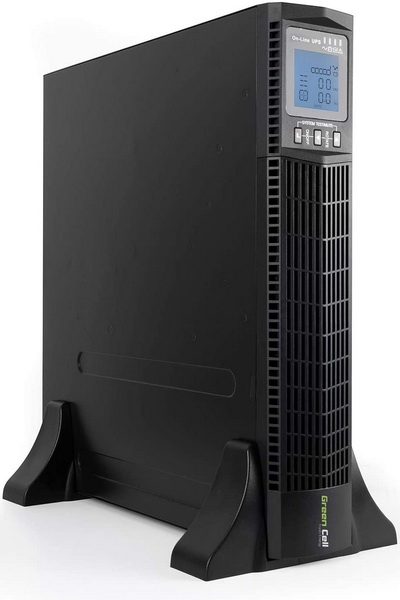
With electricity costs spiking all over the globe i expect more things to go wrong with electrical grids than ever before and let's face it, the last thing anyone wants is to end up having to replace computer parts and/or home appliances because of it. Well at least i certainly don't so to that end I've always had all my computers, TV sets and even refrigerators hooked up to UPS (uninterruptible power supplies) devices and yes i do realize this may sound as a bit overkill to some of you but spending 1/10th of the cost of any electrical device for something like that is well justified in my book. Still for office and business use where there are large server systems at play (among other devices) regular UPS models are obviously not the way to go and this is where the more advanced (at least usually) rackmount models like the Green Cell RTII UPS 13 1000VA come in.
Green Cell is an idea created in 2013 as a response to the ever-growing demand for mobility. The team, originally founded by Paweł Ochyński wanted to create a brand, that will make our lives as easy as possible in a world dominated by mobile devices. From the very beginning, we have targeted Li-Ion technology as our specialization, and the first Green Cell branded products were laptop batteries and charges alongside with power banks.
Unlike the PowerProof 2000VA model by Green Cell which i reviewed a while back (review here) which features line-interactive AVR topology with modified (or simulated) sinewave output waveform the RTII UPS13 line (currently available in 1000/2000/3000VA models) uses the more complex online topology together with pure sinewave output waveform. These two technologies give the RTII UPS13 line the ability to filter even the tiniest electrical quality fluctuations (especially ideal for areas with poor power quality) thus providing your equipment with clean and stable power (via AC to DC to AC conversion). Of course, the RTII UPS 13 family of UPS by Green Cell also provide overvoltage protection, are equipped with a front status LCD screen (rotatable), rear 80mm exhaust fan (active cooling) and 12V 9.0H AGM06 batteries (2 for the 1000VA model, 4 for the 2000VA model and 6 for the 3000VA model) and as for available connections we find 6 IEC320 ports (divided into two configurable segments), USB host port, RS232 serial port, EPO port (emergency power off - remote feature), two RJ45 ports and an intelligent slot (for USB and SNMP/ethernet cards). So, let's see what one of the top UPS models by Green Cell has to offer.
SPECIFICATIONS AND FEATURES

PACKAGING AND CONTENTS

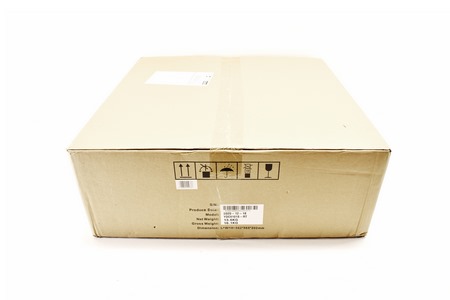 Green Cell ships the RTII UPS13 in a plain cardboard box that has their name at the front and the product serial name, barcode and weight on the right.
Green Cell ships the RTII UPS13 in a plain cardboard box that has their name at the front and the product serial name, barcode and weight on the right.
Packing is good with the UPS placed inside a plastic bag and between 2 large foam spacers.
Along with the RTII UPS13 inside the box you’ll also find two plastic feet (which for some reason I forgot to place in the picture – you can partially see them in the previous one), 2 rack mounts, USB cable, power cable, software installation instructions (3 papers) and the user manual (also contains the serial code for the Upsilon2000 software so be sure to keep it (unlike me).
THE RTII UPS13 1000VA
Since the RTII UPS13 is a rackmount UPS it’s quality large (440x430x86.5mm) and quite heavy (13.9Kg).
Much like all other rackmount UPS models I’ve used and/or reviewed to date the RTII UPS13 can be positioned either horizontally or vertically.
Even though the LCD screen can be rotated depending on the position of the UPS it only shows the current status of the unit (no settings to change from here).
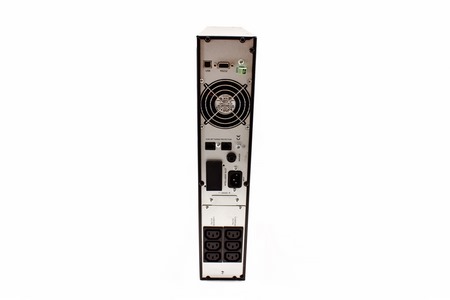
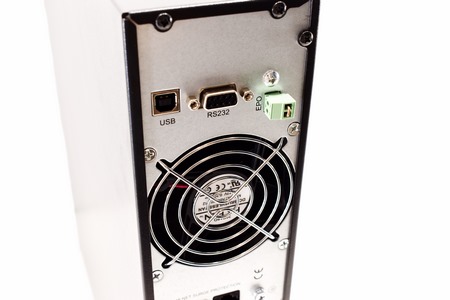
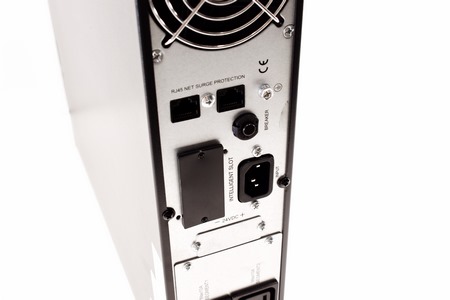
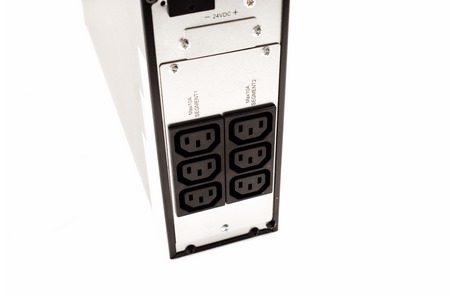 Turning the RTII UPS13 1000VA around we find the USB host port, RS232 serial port, EPO port, two RJ45 ports, intelligent slot, breaker button, power port and the 6 IEC320 ports.
Turning the RTII UPS13 1000VA around we find the USB host port, RS232 serial port, EPO port, two RJ45 ports, intelligent slot, breaker button, power port and the 6 IEC320 ports.
As mentioned earlier the LCD screen only indicates input/output voltage and HZ, power draw and battery life (the three buttons beneath are used for on/off, LCD screen rotation, alarm sound mute and self test).
The batteries are behind the front plastic grill seen in the above picture.
For this specific model Green Cell has used two 12V 9.0Ah AGM06 batteries.
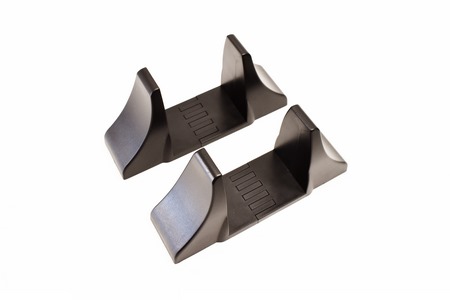
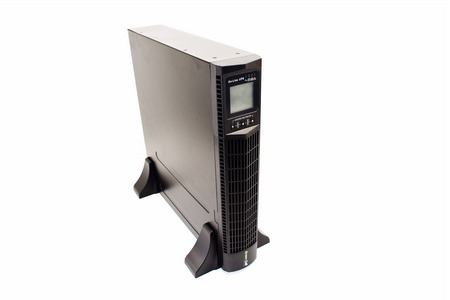 Here you can see the two feet which you’ll need to use with the RTII UPS13 if you decide to place it vertically as also seen above.
Here you can see the two feet which you’ll need to use with the RTII UPS13 if you decide to place it vertically as also seen above.
TESTING METHODOLOGY
I decided to test all UPS models that make it here in real world scenarios so what better way to do that than to use one of my TV sets and one of my test rigs? So, to check battery life I’m using a 55-inch SONY 4K TV paired with the HD Dune Pro 4K II player (4K MVK playback) and the X79 test rig (while playing several game titles). Needless to say, power draw is not 100% fixed but I did measure the minimum and maximum numbers during all tests which don’t exceed 10W for the first and 20W for the latter (so do keep this in mind).
To simulate real power outages, I will be turning the corresponding power switch in the lab a total of 5 times (5 for each test), 3 of which I will pushing it back on immediately and 2 which I will allow a couple of minutes to pass. If any of the UPS models I test fail to protect the connected equipment (or fail to keep it running) I will be sure to mention it at the end of the review.
As for noise levels I’ll be using the ExTech HD600 decibel meter placed 5cm away from each UPS model (i will not however be recording beeping sounds coming from their internal speakers).
TEST RESULTS


CONCLUSION

First of all, you may have noticed that this time over I didn’t do a presentation of the Upsilon 2000 software (you can see one here) and the why I already mentioned, I simply threw away the user manual which included the serial number (did reach out to Green Cell for a new serial but I never got one). With that out of the way the RTII UPS13 1000VA is a mixed bag for me honestly. On one hand it did very well in my power disruption/disturbance and battery life tests but on the other the fact that its noise levels while in battery operation are almost the same with when plugged into the power makes it very hard to use it inside a home or even the office (unless you can place it in a separate room). And then there’s a strange electrical noise coming from the unit as soon as I plug a device on one of its IEC power ports. So far that hasn’t proven to be an issue since everything has worked well and issue-free but it clearly doesn’t inspire confidence and even though I did mention this to Green Cell noone got back at me (my email ended up in their SPAM folder so they did reach out to me at the time of this publication).
How about price? Well, the good news is that the RTII UPS13 1000VA by Green Cell retails for around 240Euros inside the EU a price tag which is actually very good for a pure sinewave model. Unfortunately, even if I was to leave out noise levels completely from my conclusion with my review sample having that electrical noise coming from it at all times, I really can’t recommend it. If Green Cell replaces it further down the road and the new one doesn’t make the same noise then sure, that would mean it was an isolated issue, until then however it’s not something I can do (which is a shame really cause the unit did perform very well overall).
PROS
- Very Good Performance
- 6 IEC Plugs
- Pure Sinewave
- 1000VA/900W (3000VA/2700W Also Available)
- Front LCD Display
- Electrical Protections
- Price (For Some)
CONS
- Electrical Noise (Isolated Issue?)
- Noise Levels
- LCD Screen (Limited Status Display)

 O-Sense
O-Sense






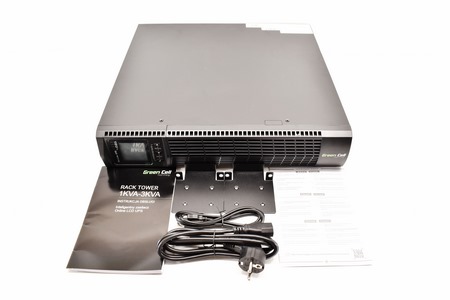
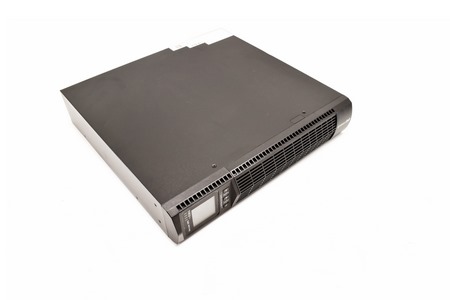
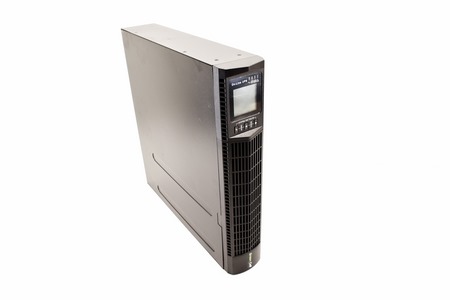
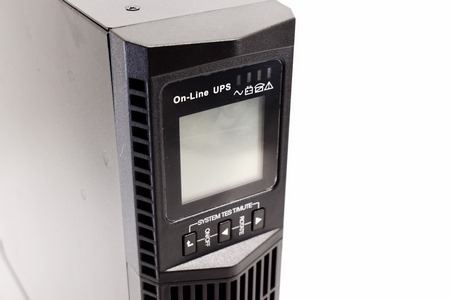
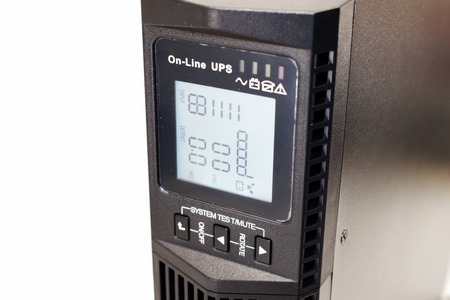
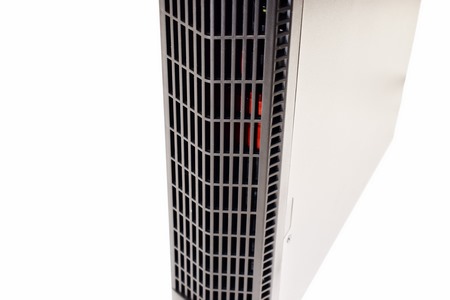
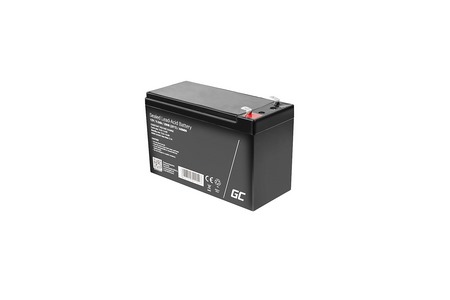


.png)

